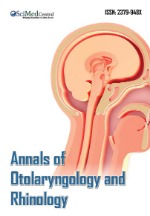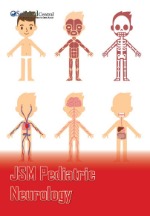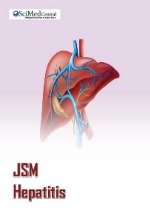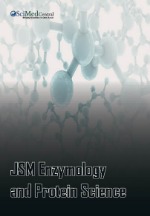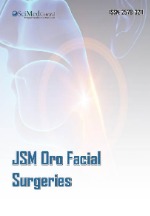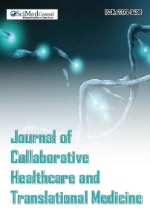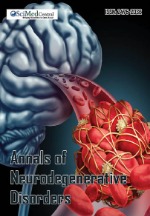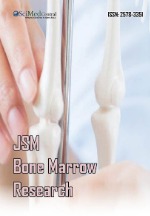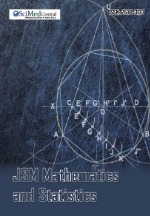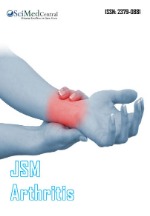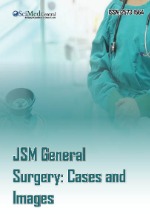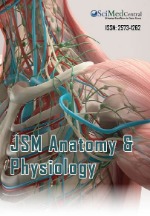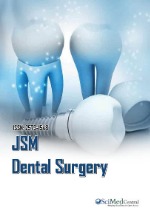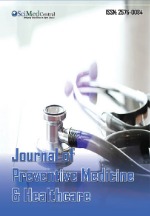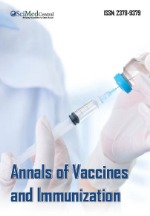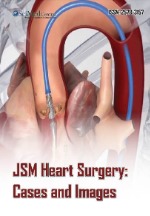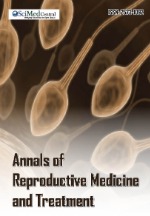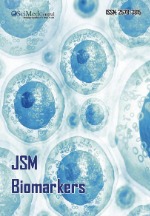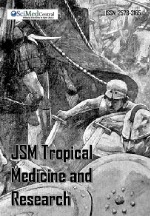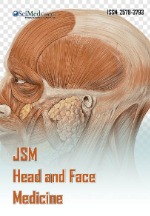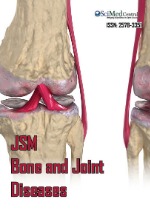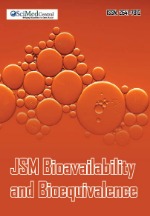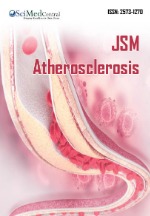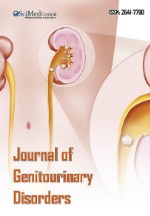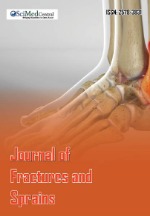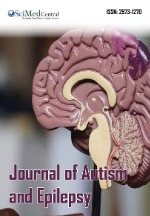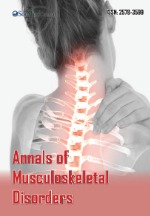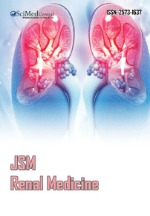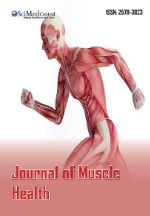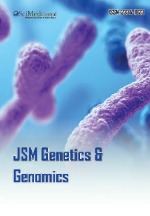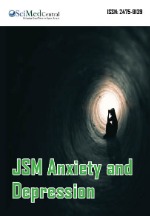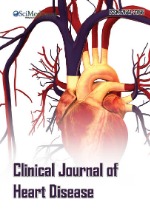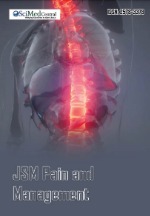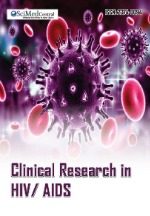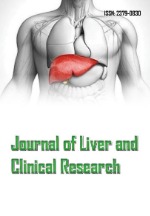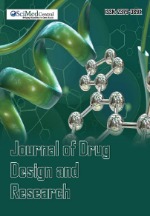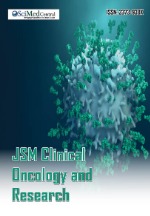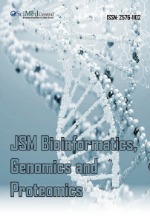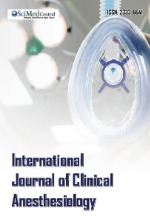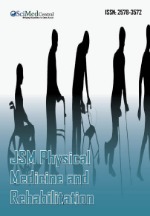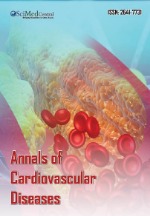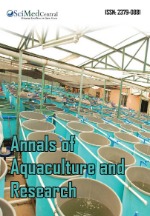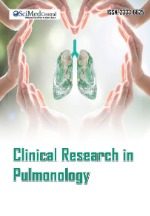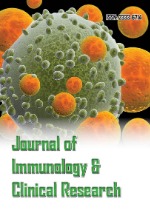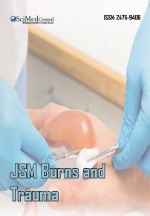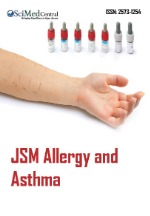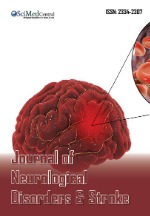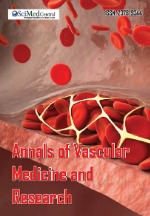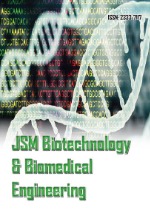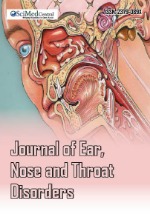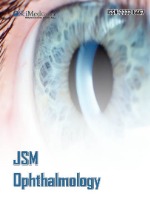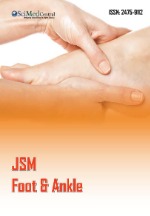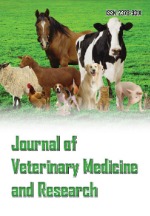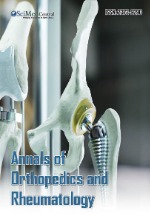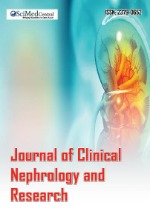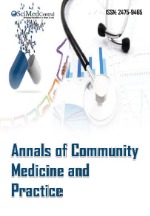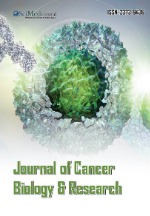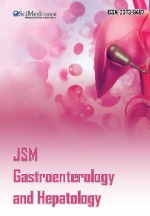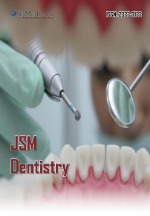Establishment of a Diabetic Nephropathy Model in Mus musculus castaneus Mouse
- 1. Office of Clinical Trials Institutions, the First People’s Hospital of Guangyuan, China
- 2. Department of Pharmacy, Banan Affiliated Hospital of Chongqing Medical University, China
- 3. Department of Pharmacology, Chongqing Key Laboratory of Biochemistry and Molecular Pharmacology, School of Pharmacy, Chongqing Medical University, China
- 4. Experimental Teaching Management Center, Chongqing Medical University, China
ABSTRACT
Background: Diabetic nephropathy (DN) significantly contributes to the mortality rates among diabetic individuals. A robust animal model is crucial for DN and related research. However, current models present various limitations.
Methods: Mus musculus castaneus mice were administered a high-fat diet for 4 weeks, followed by an injection of streptozotocin (STZ) at a dosage of 40 mg/kg/day for 5 consecutive days, i.p.. After a 7-day period, fasting blood glucose (FBG) levels were measured to determine the onset of diabetes. These diabetic mice continued access to the high-fat diet until the development of DN, which was confirmed by urea nitrogen (BUN), serum creatinine (Scr), urinary albumin, and renal pathological observation. Serum insulin was measured by ELISA method.
Results: The model group exhibited persistently high levels of FBG, accompanied by a significant reduction in body weight. Following an additional 4 weeks on the high-energy diet, the diabetic mice displayed a decline in insulin level, whereas BUN, Scr, urinary albumin, kidney index, and glomerular volume all demonstrated significantly elevations. Histological examinations revealed progressive mesangial matrix expansion, partial fused foot process, and thickening glomerular basement membrane. In contrast, high-diet control mice exhibited mild renal impairment, yet their FBG and insulin levels were comparable to those of the normal mice.
Conclusion: A robust model of DN was established in Mus musculus castaneus mice within 4 weeks after confirmation of diabetes, which was induced by a combination of feeding a high-fat diet for 4 weeks and repeated exposure to low-dose STZ. Notably, a high-fat diet alone did not induce DN under the experimental conditions.
KEYWORDS
- Animal model
- Diabetic nephropathy
- Mus musculus castaneus mice
- Streptozotocin
- High-fat diet
CITATION
Ding S, Tan R, Yang J, Liao H, Qiu H, et al. (2024) Establishment of a Diabetic Nephropathy Model in Mus musculus castaneus Mouse. J Urol Res 11(4): 1158.
INTRODUCTION
The incidence of diabetes is escalating rapidly. A global epidemiological survey forecasts that by 2045, the diabetic population will surge to 783 million [1]. A major issue of diabetes is its propensity to be associated with microvascular complications, such as nephropathy, retinopathy, and neuropathy. Diabetic nephropathy (DN) stands as the predominant cause of end- stage renal disease (ESRD) and substantially contributes to the elevated mortality among diabetic individuals [2]. To elucidate the pathogenesis of DN and discover innovative treatments, there is a pressing need to develop a reliable animal model. An ideal DN model should replicate most of the characteristics observed in humans, encompassing diminished renal function, albuminuria (greater than 10-fold), and histopathological alterations like mesangial expansion, mesangiolysis, and nodular glomerulosclerosis [3]. Moreover, considerations such as high success rates, low mortality, cost-effectiveness, and short duration are crucial. However, existing models in related studies have been limited due to various shortcomings. Hence, it is of utmost importance to establish a robust animal model that accurately mimics human DN.
Many animals have been used to establish DN models. Large animal species, such as pigs and dogs, have similar DN properties to humans, but these studies are prolonged experiments (e.g., > 2 years in dogs [4] and 5 months in minipigs [5]), which have few advantages over rodent models. Mice are the most widely used species in preclinical research, as they rapidly breed and are relatively cheap to house [6]. At present, these models are produced using genetic, surgical, and chemical interventions [7]. Genetic engineering models develop cardinal features of human DN and are widely applied in diabetes research. However, genetic engineering model animals are limited in experimental research due to high cost and special housing and breeding conditions. In addition, frequent genetic variations and large individual differences also limit their practical applications. Surgical intervention alone is rarely used for establishing DN models; instead, it is combined with chemical inducers. The inducible model is one of the most commonly used methods, destroying pancreatic β-cells with a high success rate and being easy to obtain compared to genetic models. Streptozotocin (STZ) is a common inducer for chemical intervention. Induced animal models include high-dose STZ alone, STZ plus unilateral nephrectomy, and STZ combined with a high-fat diet. Excessive doses of STZ not only act on β-cells, but also damage other organs, such as the liver and kidneys, resulting in a high death rate. However, if the dose is too small, β-cell damage will self-heal, and the model’s success rate will be low. Therefore, STZ is often used in combination with other treatments. STZ plus unilateral nephrectomy requires precise surgey and post-operative animal management. A high-fat diet combined with low-dose STZ treatment is an accepted method for establishing a diabetic model that exhibits moderate hyperglycemia, hyperlipidemia, insulin resistance, and impaired insulin secretion [6]. However, relatively little is known about the optimal dose and timing parameters for STZ administration to develop DN after diabetic onset. To simulate the pathophysiological process of human DN as much as possible, there is an urgent need for a simple, stable, and reliable animal model.
In this study, we characterize a scientific and practical model to induce DN in Mus musculus castaneus mice through a combination of a high-fat diet and repeated low-dose STZ intraperitoneal injection (i.p.). This model lays the foundation for advancing experimental research on DN.
MATERIALS AND METHODS
Chemicals and reagents
STZ (dissolved in 0.1 mmol/L citrate buffer, pH 4.5) was purchased from Sigma-Aldrich (S0130-1G; Santa Clara, CA, USA). An ELISA kit for insulin was purchased from Jiancheng Bioengineering Institute (H203; Jiangsu, China).
Animal model
Male Mus musculus cantaneus mice, aged 6-8 weeks, were provided by and housed in the Animal Laboratory Center of Chongqing Medical University (Chongqing, China, Animal qualified certificate: SCXK (Chongqing) 2018-0003). All experiments involving mice were reviewed and approved by the Animal Laboratory Administration Center and Ethics Committee of Chongqing Medical University. The experiment was carried out in accordance with the National Institutes of Health Guide for the Care and Use of Laboratory Animals.
After one week of adaptation, twenty mice were fed with a high-fat diet (containing 10% sucrose, 10% yolk, 10% axungia, 1.5% cholesterol, 0.5% bile salt and 68% basic forage, produced by Shengmin Scientific Research Animal Breeding Center, Jiangsu, China). After 4 weeks, STZ (40 mg/kg/day for 5 days, i.p.) was administered to the mice. Fasting blood glucose (FBG) levels of all mice were detected after 8 hours of fasting with a One Touch Glucometer (Johnson & Johnson, New Jersey, USA) 7 days later. Mice with FBG levels above 11.1 mmol/L were considered diabetic. Diabetic mice continued to have access to the high-fat diet until DN developed, approximately 4 weeks later, which was the DN model group (DNM). The normal group (NC group, n=20) consisted of mice fed a commercial rodent diet, and the high-fat diet control group (HF, n=20) consisted of mice fed a high-fat diet. The mice in the NC and HF groups received vehicle injections instead of STZ.
FBG and body weight (BW) were measured weekly. Mice were housed in metabolic cages (Chongqing Medical University, China) to collect 24-hour urine samples for measuring urine volume and urinary albumin. After establishing diabetes for 4 weeks, blood was collected via a retro-orbital procedure under anaesthesia. The kidneys were promptly removed and weighed. Subsequently, a portion of the tissue was fixed using 4% paraformaldehyde or 2.5% glutaraldehyde. The kidney index was calculated as kidney weight (KW) (g) / BW (g).
Detection of insulin level
At the end of the experiment, blood was collected from the retro-orbital venous plexus and clotted at room temperature for 30 min. Subsequently, it was centrifuged at 3000 ×g for 20 min. Following the manufacturer’s protocol, the optical density (OD) value at 450 nm was measured using a microplate reader (Bio- Tek ELX800, Vermont, USA) was detected.
Determination of renal function
The levels of serum creatinine (Scr), blood urea nitrogen (BUN), and urinary albumin were analyzed using an automatic biochemical analyzer (AU5811, Beckman Instruments, Inc., Brea, CA, USA), in accordance with the manufacturer’s instruction. Urinary albumin excretion was calculated as follows: urinary albumin (μg/mL) × urine volume (mL)/24 h.
Histopathological analysis
Kidney tissue was fixed in 4% paraformaldehyde for 48 h, followed by dehydration with 75% ethanol and subsequent embedding in paraffin. The embedded tissue was then sectioned into thin slices (4 μm). The quantification of glomerular volume was conducted as previously described [8]. In brief, digitized images were scanned, and the profile areas were outlined using ImageJ 1.43 software. The mean glomerular tuft volume (GV) was ascertained from the mean glomerular cross-sectional area (GA), which was observed under light microscopy. The GA was determined by calculating the average area of 20 glomeruli per mouse across 5 mice per group. The GV was calculated using the following equation: GV=β/κ×GA3/2, where β=1.38, representing the shape coefficient of spheres (the idealized shape of glomeruli), and κ=1.1, representing the size distribution coefficient.
Kidney tissue was dissected into 1 mm3 pieces and subsequently fixed with a 2.5% cold glutaraldehyde solution (pH 7.4) in a centrifuge tube. The tissue samples were then rinsed and post-fixed with 1% osmium tetroxide in 0.1 mol/L PBS for 2 h at room temperature. Following this, the samples were dehydrated through a graded series of ethanol to propylene oxide and embedded in epoxy resin. Sections of 600-Å thicknenss were made and observed under a transmission electron microscope (H-7500, Hitachi, Japan).
Statistical analysis
The results were presented as the mean ± standard deviation (S.D.). Differences among the groups were analyzed by one-way ANOVA or SNK-q test via SPSS statistical package (version 17.0). P values < 0.05 were considered statistically significant.
RESULTS
General health of the experimental mice
Mice in the NC and HF groups exhibited superior mental states, responsive reaction, increased activity, and smoother hair compared to the DNM group. Throughout the experimental period, there were no fatalities among any of groups. Out of 20 mice subjected to STZ combined with a high-fat diet, 18 successfully developed into diabetic models. These mice gradually manifested symptoms such as polydipsia, polyuria, fluffy and dirty hair, unresponsiveness, and mental malaise. After an additional 4 weeks, all diabetic mice progressed to DN, which was confirmed through histopathological observation and renal functional detections. Consequedntly, the success rate for this model was 90%, with a mortality rate of 0%.
At the onset of the experiment, BW was statistically similar across all groups (P > 0.05). Over time, BW increased in both the NC and HF groups. In the DNM group, BW also showed an increase during the initial 4 weeks. However, following STZ administration, BW remained stable (P > 0.05). At the end of the experiment, BW in the DNM group was significantly lower than that of the vehicle-treated mice in the NC and HF groups) (P < 0.01) (Figure 1).
Figure 1 Changes of body weight in mice during the experiment. STZ: streptozotocin; FBG: fasting blood glucose; DM: diabetes mellitus. NC: normal group (n=20); HF: high-fat diet control group (n=20); DNM: diabetic nephropathy model group (n=18). Mean ± SD. **P < 0.01, compared with NC group; ##P < 0.01, compared with HF group.
Development of diabetes in mice
Before the injection of STZ, the FBG levels were similar and less than 11.1 mmol/L in all experimental groups (P > 0.05). After 7 days of treatment with STZ, the FBG levels significantly increased in the DNM mice (20.03 ± 1.79 mmol/L) (P < 0.01), and remained elevated until the end of the experiment, indicating the development of diabetes in these mice. The FBG levels did not significantly change in the NC (7.20 ± 1.25 mmol/L) and HF (8.67± 0.92 mmol/L) groups during the experiment (P > 0.05) (Figure 2).
Figure 2 Changes of fasting blood glucose level (FBG) in mice during the experiment. STZ: streptozotocin; DM: diabetes mellitus. NC: normal group (n=20); HF: high-fat diet control group (n=20); DNM: diabetic nephropathy model group (n=18). Mean ± SD. **P < 0.01, compared with NC group; ##P < 0.01, compared with HF group.
Similarly, there was no difference in insulin levels between the NC and HF groups (P > 0.05), but a decrease was observed in the DNM group (P < 0.01) (Figure 3).
Figure 3 Changes of insulin level in mice. NC: normal group (n=20); HF: high-fat diet control group (n=20); DNM: diabetic nephropathy model group (n=18). Mean ± SD. **P < 0.01, compared with NC group; ##P < 0.01, compared with HF group.
Changes of renal function
After the onset of dibetes for 4 weeks, the DNM group showed significantly elevated levels of Scr, BUN, and urinary albumin compared to the NC group (P < 0.05). Notably, urinary albumin levels in the DNW group increased by 21.25-fold. In the HF group, there was a slight increase in BUN (P < 0.05) and a modest elevation in urinary albumin, with a 1.56-fold increase (P < 0.01). However, Scr levels did not differ significantly between the HF and NC groups (P > 0.05) (Table 1).
Table 1: Changes of renal function in mice (mean ± SD)
|
group |
n |
BUN (mmol/L) |
Scr (μmol/L) |
urinary albumin (μg/24 h) |
|
NC |
20 |
6.80 ± 0.26 |
19.22 ± 0.36 |
58.84 ± 4.62 |
|
HF |
20 |
7.73 ± 0.91* |
20.59 ± 5.49 |
150.40 ± 7.80** |
|
DNM |
18 |
8.53 ± 0.38* |
32.25 ± 5.04*# |
1309.35 ± 230.79**## |
Histological damages in kidneys of diabetic mice
The kidney index in both the DNM and HF groups demonstrated a significant increase (P < 0.05), with a notably higher increase observed in the DNM mice (P < 0.05) (Figure 4).
Figure 5 Renal pathological changes in mice (H.E staining, ×400). A: Light microscopic images. B: Changes of glomerular volume. NC: normal group; HF: high-fat diet control group; DNM: diabetic nephropathy model group. Mean ± SD, n=5. **P < 0.01, compared with NC group; ##P < 0.01, compared with HF group.
Following 4 weeks post diabetes onset, renal tissue from the DNM mice revealed glomerular volume enlargement, thickening of the glomerular basement membrane, and expansion of the mesangial matrix under light microscopy. In contrast, the NC and HF groups exhibited no visible lesions (Figure 5A). The glomerular volume in both the DNM and HF groups showed a significant rise (P < 0.01), however, the increase was more pronounced in the DNM group (P < 0.01) (Figure 5B).
For further verification, transmission electron microscopy was employed. As illustrated in Figure 6, the DNM group exhibited mesangial matrix expansion, foot process broadening and flattening, partial fusion, and glomerular basement membrane thickening. Conversely, the NC group displayed no significant abnormalities in the glomeruli and tubulointerstitium. The HF group demonstrated partial fusion of the foot process.
Figure 6 Renal ultrastructural changes in mice (transmission electron microscopic, ×10000). BM: basement membrane; FP: foot processes; Mes: mesangial cell; RBC: red blood cell. NC: normal group; HF: high-fat diet control group; DNM: diabetic nephropathy model group.
DISCUSSION
DN is a microvascular complication of DM, which can lead to chronic renal failure and uremia [9,10]. It affects both type I and type II diabetics, and is clinically characterized by proteinuria and a decline in the glomerular filtration rate. Early stage DN is marked by glomerular hypertrophy, mesangial matrix expansion, and basement membrane thickening [11]. In order to conduct a comprehensive study on DN, it is essential to have a reliable and convenient animal model. STZ, the most widely used chemical to induce diabetes, selectively damages pancreatic cells, causes cell necrosis, and results in reduced blood insulin and elevated blood sugar [12]. However, systematic research on the development and examination of DN after diabetes onset is scarce. Therefore, this study aimed to explore an efficient, economical, and easy approach to establish a DN model that mimics the pathological progress observed in diabetic patients.
It is widely recognized that 90% of rodent genomes are identical to the human genome. Rats and mice, used in a variety of genetic, chemical and surgical models, are extensively utilized
in diabetic model systems. Numerous animal strains have been employed to establish diabetes and its complications induced by STZ. Among these, C57BL/6J mice are the most frequently used. Interestingly, the Southeast Asian house mouse, Mus musculus castaneus, demonstrates the same rate and stability in the establishment of a diabetic model. However, they are more attractive than C57BL/6J mice due to their relatively low cost, fecundity, and short gestation times. Studies have also found that Mus musculus castaneus mice are superior for immunological studies because of their genetic diversity [13]. However, diabetic models are rarely established in Mus musculus castaneus mice. In this study, long-term high-energy feeding combined with STZ at 40 mg/kg/day for 5 days i.p. resulted in diabetes-related changes in Mus musculus castaneus mice, including weight lost, increased FBG (above 11.1 mmol/L), and the decreased insulin. Moreover, symptoms of diabetes, such as polydipsia, polyuria, polyphagia, poor mental status, dull hair, etc., became increasingly apparent in the STZ-treated mice. It is noteworthy that diabetes did not develop in the mice by giving a high-fat diet alone under the same experimental conditions, which was consistent with the studies of our previous work [14] and those of Brainard et al., [15].
In a state of long-term hyperglycemia following DM, glucose molecules and proteins in the body undergo non-enzymativ glycosylation, resulting in the formation of advanced glycation end products (AGEs). These AGEs induce structural alterations in the glomerular basement membrane, impair filtration membrane function, promote extracellular matrix hyperplasia, and ultimately lead to glomerulosclerosis and proteinuria [16]. A comprehensive model of DN should encompass all characteristic features of the disease. Albuminuria is a crucial marker for DN [17]. Studies have reported the onset of albuminuria between 4 to 20 weeks of age or 4 to 12 weeks post-STZ administration in type I DM rats or mice, and between 8 weeks to 18 months of age or 5 to 20 weeks post-STZ in type II DM rats or mice [7]. The criteria for establishing a DN animal model, as proposed by the Animal Models of Diabetes Complications Consortium website (AMDCC), include a 10-fold increase in albuminuria compared to age and gender-matched controls of the same strain in the animal model [18]. In our study, 4 weeks after the establishment of diabetes, which is 5 weeks post-STZ, urinary albumin levels increased by 21.25 times. This marked elevation in urinary albumin was accompanied by a decline in renal function, further indicating renal damage. Research has shown that Scr/eGFR, or a combination of both, serve as robust predictors of adverse outcomes in individuals with DN [19,20]. Notably, levels of BUN and Scr rose significantly after 4 weeks of diabetes onset, suggesting impaired renal function in diabetic mice. Pathological changes, including mesangial expansion, mesangiolysis, and nodular glomerulosclerosis, are hallmark features of DN. However, generating mouse models that consistently exhibit all these characteristics has been challenging. Many contemporary models display only moderate albuminuria and minimal histopathological changes, primarily limited to mesangial matrix expansion and glomerular hypertrophy [18]. In our study, pathological examination revealed progressive mesangial matrix
expansion, partial fusion of foot process, and thickening of the glomerular basement membrane in the model mice. Additionally, both kidney index and glomerular volume increased. These findings suggest the development of characteristic consistent with the early stage of human diabetes. Collectively, these observations of renal function and structure indicate the emergence of DN after 4 weeks of diabetes onset, with the entire duration spanning approximately 10 weeks. In the present study, 90% of Mus musculus castaneus mice successfully developed DN, with no mortality during the experiment.
Additionally, functional impairment and structural alterations were observed in mice subjected to a high-fat diet. However, the FBG level and urinary albumin content were below the diagnostic thresholds for diabetes and DN, respectively, and insulin levels remained unchanged. These findings suggest that a prolonged high-fat diet, lasting approximately 10 weeks, led to renal structural and functional damage, yet did not progress to DN.
CONCLUSION
In conclusion, a diabetic model was developed by administering a high-fat diet for 4 weeks combined with repeated low-dose STZ exposure (40 mg/kg/day for 5 days, i.p.). Subsequently, a DN model was validated after an additional 4 weeks in Mus musculus castaneus mice. This study introduces a reliable, cost-effective, and user-friendly in vivo model for future DN investigations, which is recommended for widespread adoption.
ACKNOWLEDGEMENT
This work was supported by the Natural Science Foundation of Chongqing, China (No. cstc2017jcjAX0211).
REFERENCES
- IDF Diabetes Atlas 10th edition, IDF, 2021.
- Wang N, Zhang C. Recent advances in the management of diabetic kidney disease: slowing progression. Int J Mol Sci. 2024; 25: 3086.
- Liang J, Liu Y. Animal models of kidney disease: Challenges andperspectives. Kidney360. 2023; 4: 1479-1493.
- Herring IP, Panciera DL, Werre SR. Longitudinal prevalence of hypertension, proteinuria, and retinopathy in dogs with spontaneous diabetes mellitus. J Vet Intern Med. 2014; 28: 488-495.
- Liu Y, Li H, Wang S, Yin W, Wang Z. Ibrolipim attenuates early-stage nephropathy in diet-induced diabetic minipigs: Focus on oxidative stress and fibrogenesis. Biomed Pharmacother. 2020; 129: 110321.
- Mu J, Woods J, Zhou YP, Roy RS, Li Z, Zycband E, et al. Chronic inhibition of dipeptidyl peptidase-4 with a sitagliptin analog preserves pancreatic beta-cell mass and function in a rodent model of type 2 diabetes. Diabetes. 2006; 55: 1695-1704.
- Li F, Ma Z, Cai Y, Zhou J, Liu R. Optimizing diabetic kidney disease animal models: Insights from a meta-analytic approach. Animal Model Exp Med. 2023; 6: 433-451.
- Sanden SK, Wiggins JE, Goyal M, Riggs LK, Wiggins RC. Evaluation ofa thick and thin section method for estimation of podocyte number,glomerular volume, and glomerular volume per podocyte in rat kidney with Wilms’ tumor-1 protein used as a podocyte nuclear marker. J Am Soc Nephrol. 2003; 14: 2484-2493.
- Meir J, Huang L, Mahmood S, Whiteson H, Cohen S, Aronow WS. The vascular complications of diabetes: a review of their management, pathogenesis, and prevention. Expert Rev Endocrinol Metab. 2024; 19: 11-20.
- Gorsane I, Ayed TB, Hajji M, Barbouch S, Abdallah TB. Nephrotic syndrome in elderly: Etiologies, management, and prognosis. Saudi J Kidney Dis Transpl. 2021; 32: 1388-1396.
- Sindhu D, Sharma GS, Kumbala D. Management of diabetic kidney disease: where do we stand?: A narrative review. Medicine (Baltimore). 2023; 102: 33366.
- Graham ML, Janecek JL, Kittredge JA, Hering BJ, Schuurman HJ. The streptozotocin-induced diabetic nude mouse model: differences between animals from different sources. Comp Med. 2011; 61: 356– 360.
- Poltorak A, Apalko S, Sherbak S. Wild-derived mice: from genetic diversity to variation in immune responses. Mamm Genome. 2018; 29: 577-584.
- Zhang J, Qiu H, Huang J, Ding S, Huang B, Wu Q, et al. Establishment of a diabetic myocardial hypertrophy model in Mus musculus castaneus mouse. Int J Exp Pathol. 2018; 99: 295-303.
- Brainard RE, Watson LJ, Demartino AM, Brittian KR, Readnower RD, Boakye AA, et al. High fat feeding in mice is insufficient to induce cardiac dysfunction and does not exacerbate heart failure. PLoS One. 2013; 8: 83174.
- Pasupulati AK, Nagati V, Paturi ASV, Reddy GB. Non-enzymatic glycation and diabetic kidney disease. Vitam Horm. 2024; 125: 251- 285.
- Lin S, Teng J, Li J, Sun F, Yuan D, Chang J. Association of chemerin and vascular endothelial growth factor (VEGF) with diabetic nephropathy. Med Sci Monit. 2016; 22: 3209-3214.
- Azushima K, Gurley SB, Coffman TM. Modelling diabetic nephropathyin mice. Nat Rev Nephrol. 2018; 14: 48-56.
- Norris KC, Smoyer KE, Rolland C, Vaart JV, Grubb EB. Albuminuria, serum creatinine, and estimated glomerular filtration rate as predictors of cardio-renal outcomes in patients with type 2 diabetes mellitus and kidney disease: a systematic literature review. BMC Nephrol. 2018; 19: 36.
- Low S, Zhang X, Ang K, Yeo SJD, Lim GJ, Yeoh LY, et al. Discovery and validation of serum creatinine variability as novel biomarker for predicting onset of albuminuria in type 2 diabetes mellitus. Diabetes Res Clin Pract. 2018; 138: 8-15.







